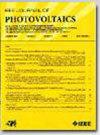Performance Improvements Through Advanced PV Backtracking on Uneven Terrain
IF 2.6
3区 工程技术
Q3 ENERGY & FUELS
引用次数: 0
Abstract
The climatic sensitivity of new terrain-aware backtracking algorithms is evaluated across 800 locations in the continental USA on a representative synthetic rolling terrain. We find that a global optimization approach to backtracking results in climate-specific annual energy gains of 2.4%–3.2% relative to a traditional backtracking algorithm baseline. We identify a strong logarithmic correlation between local diffuse fraction and yield improvement, and highlight the effect of seasonal precipitation on performance gains. We also find that a backtracking approach, which approximates the terrain as constant, does not offer significant annual energy gains over the baseline on the synthetic terrain. Our findings suggest that specific yield from backtracking in the USA can be improved by as much as 88 kWh/kW by considering terrain when selecting a backtracking algorithm.通过在不平坦地形上的先进PV回溯改进性能
新的地形感知回溯算法的气候敏感性在美国大陆800个地点的代表性合成滚动地形进行了评估。我们发现,与传统的回溯算法基线相比,回溯的全球优化方法可使气候特定的年能源收益增加2.4%-3.2%。我们确定了局部扩散分数与产量提高之间的强对数相关性,并强调了季节性降水对性能提高的影响。我们还发现,将地形近似为常数的回溯方法,在合成地形上并不能提供显著的年能量增益。我们的研究结果表明,在美国,通过在选择回溯算法时考虑地形,回溯的具体发电量可以提高多达88千瓦时/千瓦。
本文章由计算机程序翻译,如有差异,请以英文原文为准。
求助全文
约1分钟内获得全文
求助全文
来源期刊

IEEE Journal of Photovoltaics
ENERGY & FUELS-MATERIALS SCIENCE, MULTIDISCIPLINARY
CiteScore
7.00
自引率
10.00%
发文量
206
期刊介绍:
The IEEE Journal of Photovoltaics is a peer-reviewed, archival publication reporting original and significant research results that advance the field of photovoltaics (PV). The PV field is diverse in its science base ranging from semiconductor and PV device physics to optics and the materials sciences. The journal publishes articles that connect this science base to PV science and technology. The intent is to publish original research results that are of primary interest to the photovoltaic specialist. The scope of the IEEE J. Photovoltaics incorporates: fundamentals and new concepts of PV conversion, including those based on nanostructured materials, low-dimensional physics, multiple charge generation, up/down converters, thermophotovoltaics, hot-carrier effects, plasmonics, metamorphic materials, luminescent concentrators, and rectennas; Si-based PV, including new cell designs, crystalline and non-crystalline Si, passivation, characterization and Si crystal growth; polycrystalline, amorphous and crystalline thin-film solar cell materials, including PV structures and solar cells based on II-VI, chalcopyrite, Si and other thin film absorbers; III-V PV materials, heterostructures, multijunction devices and concentrator PV; optics for light trapping, reflection control and concentration; organic PV including polymer, hybrid and dye sensitized solar cells; space PV including cell materials and PV devices, defects and reliability, environmental effects and protective materials; PV modeling and characterization methods; and other aspects of PV, including modules, power conditioning, inverters, balance-of-systems components, monitoring, analyses and simulations, and supporting PV module standards and measurements. Tutorial and review papers on these subjects are also published and occasionally special issues are published to treat particular areas in more depth and breadth.
 求助内容:
求助内容: 应助结果提醒方式:
应助结果提醒方式:


